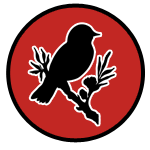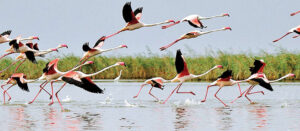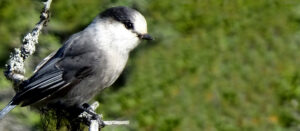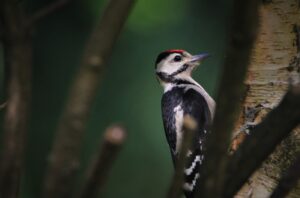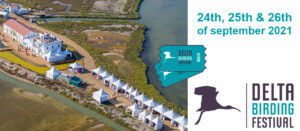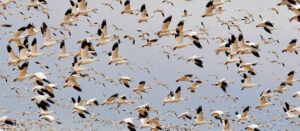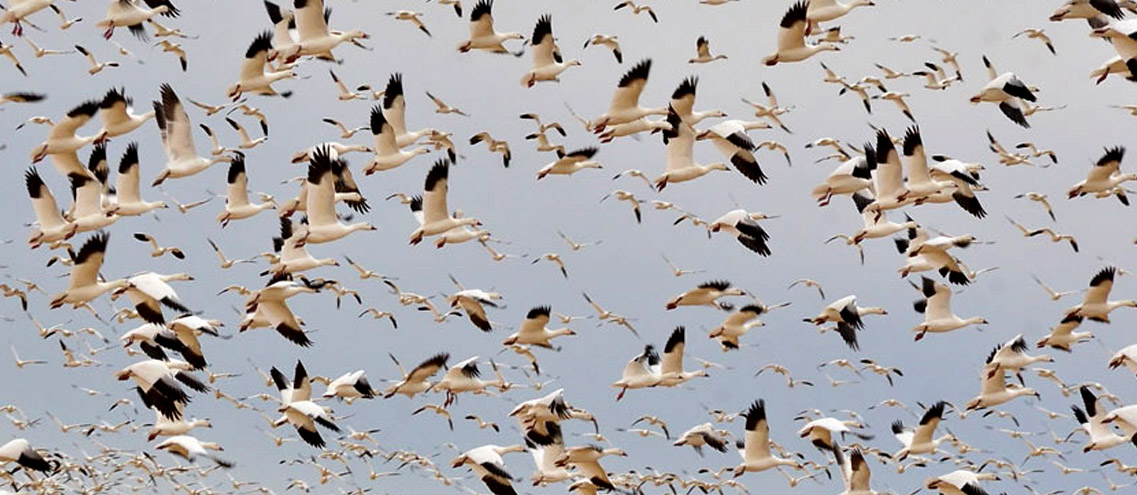
There are 4 major flyways in the USA. A flyway is what it sounds like… a highway for birds! The flyways run north to south as migratory routes for birds leaving the colder northern climates to head to warmer, more temperate ones in Winter. Obviously there are many smaller routes that join up and intersect with these major migrationary flows
Pacific Flyway:
The Pacific Flyway runs down the left hand side of Canada, the United States and Central America. Birds can migrate along this route from the Arctic Tundra all the way down to the South American wetlands. In fact, it’s estimated that 1 billion birds traverse this route every year.
Central Flyway:
The Central Flyway runs down the East side of the Rockies from Canada to Colorado, then running down through Texas into Mexico.
Mississippi Flyway:
The Mississippi Flyway is a huge network of tributaries from all over the northern parts of Canada and America, often following river paths down into the Mississippi and Missouri Rivers towards the Gulf of Mexico. Migratory paths often follow river flows due to their provision of food and habitation en route.
Atlantic Flyway:
The Atlantic Flyway runs down from the Eastern side of North America down past the Caribbean.
Where can you go to see major migrations of birds?
Rio Grande Valley
The Rio Grande Valley is renowned for it’s huge diversity of bird species. Since so many ecological environments make up the Lower Rio Grande Valley from woodland to coast to forest. It is where two major migratory corridors pass – the Central and the Mississippi. Over 500 different types of bird have been identified throughout the valley. There is a vast and wonderful array of resident bird species. Local birds include the Great Kiskadee, Green Jay and Altamira Oriole. Olive sparrows, Green and Ringed Kingfishers, Plain Chachalaca, Brown Pelican and Buff-Bellied Hummingbird is just a small selection of birds you might spot.
In the fall, there is an influx of raptors. These include Mississippi Kites, Broadwinged Hawks, Vermillion Flycatchers and American Kestrels. In winter you’ll see a lot of migratory birds since the temperatures are relatively mild in the Rio Grande Valley. Geese, ducks, and cranes are regularly spotted. Springtime birders will likely see Long billed Thrashers too. Visit the Wold Birding Centre to find out what events are happening when you make your visit!
Point Reyes National seashore
Point Reyes National Seashore in California is truly a spectacular place. More than half of America’s Native species of bird have been sighted here. Coastal and ocean birds such as Albratross, Grebes, Loons, Petrels, Shearwaters, Boobies, Gannets, Cormorants, Herons, Bitterns, Ibis, Strokes, Swan and Geese are common place. You might also see Turkey Vultures, Peregrine Falcons, Golden Eagle, Bald Eagle, hawks, osprey and kites.
Not only will you come across a wide range of birds but there is an interesting array of wildlife. Mammals include Elf, coyote, red fox, fallow deer, racoon, black bear, badgers, skunks, mice, voles, rats, jackrabbits, weasels and otters. In the water you’ll see Northern Elephant Seals, Californian Sea Lions, Harbor Seals, Northern Fur Seals and Guadalupe seals. For non furry mammals there’s blue, humpback, minke, sperm, killer and beaked whales. Plus dolphins and porpoises.
